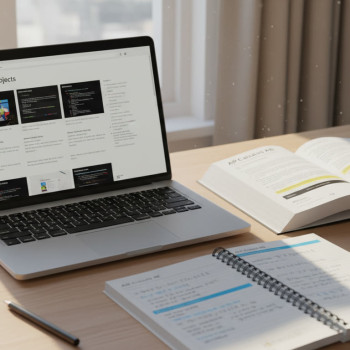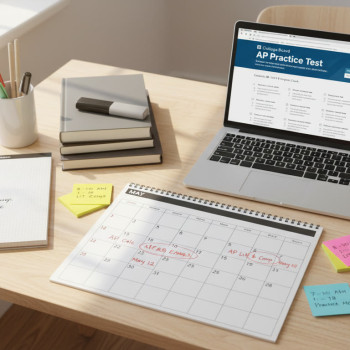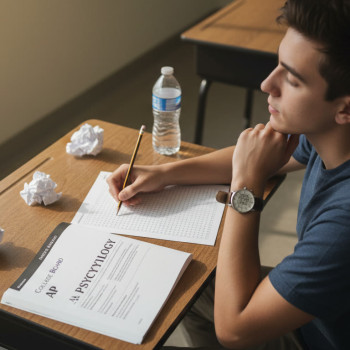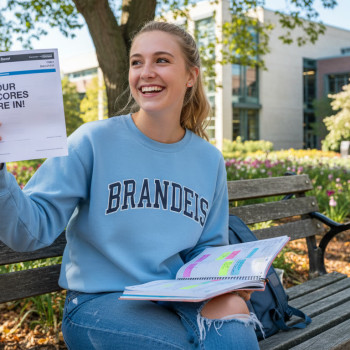Why Office Hours Matter for AP Students
Office hours are more than a safety net — they’re a secret weapon. If you’re taking an AP class, you’re in a fast-paced, college-level environment where small course corrections make a big difference. Office hours give you time to ask targeted questions, practice skills with immediate feedback, and get clarity when a concept refuses to click. Think of them as focused coaching sessions that can change how you prepare, perform, and feel about the subject.
What Students Tend to Miss
Many students treat office hours as a last resort — something to visit only after panic sets in. The smarter move is to treat them like a planned learning block: short, regular, and strategic. Teachers are there to help you master the skills AP exams reward: analytical writing, problem solving, evidence-based reasoning, and efficient test strategies. Using office hours proactively helps you build those skills steadily rather than cramming them all in the week before the exam.

Plan First: How to Prepare Before You Go
Walking into office hours without a plan is like starting a study session without a goal. Preparation maximizes every minute and shows your teacher you value their time — which often gets you better feedback.
Quick Pre-Visit Checklist
- Write a one-sentence goal: What do you want to leave knowing?
- Bring specific materials: the problem, your attempted solution, and the exact timestamp or page for digital resources.
- Note your thought process: what made you stuck and what you tried.
- Have a quick list of follow-up actions you’ll do after the meeting.
Example: “Goal — Understand how to structure my thesis for the AP English Literature prompt about poetic form.” That’s clear, actionable, and gives the teacher a precise target to help you reach.
Scheduling Strategies: When and How Often to Visit
Office hours look different across schools: some teachers set weekly blocks, others offer appointment slots, and a few welcome drop-in questions before or after class. Pick the rhythm that fits your needs and your teacher’s availability.
Three Scheduling Models
- Weekly Micro-Visits — 10–15 minutes each week for quick checks and small questions. Great for staying on top of problem areas.
- Biweekly Deep Dives — 30–45 minutes every two weeks to review practice tests, essays, or long problem sets.
- Pre-Exam Intensive — 60–90 minutes in the days before a unit test or the AP exam for targeted review and strategy adjustments.
Which one is best? Combine them. Use weekly micro-visits for incremental improvements; add a biweekly deep dive for skill-building and a pre-exam intensive as a final polish.
What to Bring: A Simple Toolkit
Bring the right tools and you’ll leave with progress, not just reassurance.
Office-Hour Toolkit
- Notebook or digital note app with a dated entry for each visit
- Attempted work, practice tests, drafts, and specific questions
- Rubrics or scoring guidelines if available
- Phone with a voice memo app (ask permission before recording key points)
- Action plan template (see table below for an example)
| Section | What to Record | Why It Helps |
|---|---|---|
| Question | One-sentence goal for the visit | Focuses the conversation and sets a measurable outcome |
| Attempt | Your work and steps you tried | Helps the teacher diagnose thinking patterns and misconceptions |
| Feedback | Corrections, hints, model answers | Concrete takeaways to apply to future practice |
| Action Items | 3 specific next steps and a deadline | Keeps momentum and prevents reversion to passive studying |
How to Ask Better Questions
Teachers can help faster when students ask clear, specific questions. Here’s how to upgrade your questions from “I don’t get this” to “Here’s what I tried and where I think I went wrong.”
Question Templates That Work
- “I tried X, Y, Z and got stuck at step B. Can you show me a simpler way to think about B?”
- “Which part of my essay most weakens my argument? How can I fix it in one paragraph?”
- “I’m scoring low on multiple-choice sections. Can we look at three example questions and my approach to each?”
These templates help your teacher see your thought process and tailor feedback to where you actually need it.
Make the Meeting Count: During Office Hours
Use the time to practice thinking, not just to get answers. Active learning during office hours means solving, explaining, and immediately applying feedback.
A 15-Minute Office-Hour Workflow
- Minute 0–2: State your one-sentence goal and show your attempt.
- Minute 2–8: Work through the problem with the teacher; verbalize your reasoning.
- Minute 8–12: Teacher models an approach or highlights a correction.
- Minute 12–15: Write an action plan and confirm next steps or resources.
Closing the loop by summarizing what you learned back to the teacher seals understanding and helps the teacher know you’re ready to apply the advice on your own.
Using Office Hours for Different AP Subjects
Office hours look different depending on the subject. Below are practical examples so you can show up ready — no matter if you’re in AP Calculus, AP U.S. History, AP Biology, or AP English.
AP Calculus
- Bring a specific problem and identify which theorem or technique you’re unsure about.
- Ask for graphical intuition in addition to symbolic steps.
- Request one additional practice problem with a hint to try before the next class.
AP U.S. History
- Bring a practice DBQ or a thesis draft and request feedback on evidence and synthesis.
- Use office hours to practice quick outlines under time pressure.
- Ask which primary sources are most likely to appear in essay prompts and why.
AP Biology
- Work through a lab graph or data set; focus on interpreting results, not just memorizing facts.
- Ask for a checklist of core biological processes you must relate to exam questions.
AP English Literature
- Bring a paragraph or two from an essay draft and ask for line edits and structure advice.
- Request a mini-lesson on close reading strategies for poetry or prose.
How to Use Technology to Coordinate Office Hours
Many teachers and schools use platforms like AP Classroom, Google Calendar, or sign-up sheets to manage slots. A short, polite email or calendar booking shows respect for the teacher’s schedule and increases your chances of getting a useful time.
Tips for Scheduling via Email or Calendar
- Suggest 2–3 time options and ask if a shorter slot would be better.
- Include the one-line goal in the calendar description.
- Cancel promptly if you can’t make it to free the slot for another student.
Turn Office Hours Into Long-Term Gains
Office hours aren’t one-off problem-solving sessions; they’re opportunities to build a relationship with someone who can mentor your learning. With consistent use, these sessions can improve your score trajectory, deepen your subject knowledge, and sharpen test-taking skills.
Track Progress with a Simple Log
Use a short log to measure growth and keep your visits purposeful. Record date, goal, outcome, and the next action. Over time, your log becomes a portfolio of improvement you can analyze before mock tests and the real AP exam.
| Date | Visit Goal | Key Feedback | Action Items | Follow Up Date |
|---|---|---|---|---|
| Oct 7, 2025 | Clarify thesis structure for practice DBQ | Focus each paragraph on a single claim tied to evidence | Rewrite intro and outline three body paragraphs by Oct 10 | Oct 12, 2025 |
| Oct 1, 2025 | Understand substitution method for integrals | Confirm u-sub choices and check boundaries | Complete 4 practice integrals and bring work | Oct 8, 2025 |
When Office Hours Aren’t Enough: Layering Support
If you find that even with solid office-hour routines you still have gaps, it’s okay to build additional layers of support. That might include peer study groups, targeted AP review sessions, or personalized tutoring for chronic trouble spots.
How Personalized Tutoring Helps
One-on-one tutoring can align perfectly with what you bring to office hours. Tutors can provide tailored study plans, drill practice on weak areas, and reinforce concepts between teacher visits. For students who combine weekly office hours with occasional tutoring, learning accelerates. Services like Sparkl’s personalized tutoring offer 1-on-1 guidance, tailored study plans, expert tutors, and AI-driven insights that can make your office-hour work more productive by giving you practice and feedback between sessions.
Common Pitfalls and How to Avoid Them
A few predictable mistakes keep students from getting the most out of office hours. Here’s how to sidestep them.
Pitfall Checklist
- Vague Goals — Fix: Bring a one-sentence objective.
- Overreliance on Answers — Fix: Ask for strategies, not just solutions.
- Inconsistent Follow-Through — Fix: Commit to 1–3 action items and set deadlines in your calendar.
- Too Many Questions at Once — Fix: Prioritize and book a longer slot for more complex issues.
Office Hours Etiquette
Respect and clarity make office hours better for everyone. A teacher’s time is limited, so showing courtesy goes a long way.
Simple Etiquette Rules
- Be punctual. A five-minute window can be the difference between a productive session and a rushed one.
- Stay focused. Keep phones silent and avoid unrelated distractions.
- Be honest about what you tried — teachers can’t help with unknowns.
- Express gratitude. A quick thank-you note or message is appreciated.
Sample Office-Hour Calendar for an AP Student
Below is a sample weekly schedule that balances classwork, review, office hours, and targeted practice. Adapt the times to your own day, but keep the balance: short, frequent checks and longer weekly practice blocks.
| Day | Activity | Duration | Goal |
|---|---|---|---|
| Monday | AP Class + 10-min Office-Hour Drop-In | 10 minutes | Clarify a homework question |
| Wednesday | Focused Study Session | 45 minutes | Practice problems and timed multiple-choice |
| Friday | 30-min Scheduled Office Hour | 30 minutes | Review practice test questions and get feedback |
| Sunday | Mock Exam or Essay | 90 minutes | Simulate test conditions and identify weak spots |
Turning Feedback Into Better Scores
Seeing improvement on practice tests is the best proof that your office-hour strategy is working. Use the feedback you receive to create measurable practice goals: aim to cut a specific type of error by half, improve timing, or tighten thesis statements. Track these small wins; they compound quickly.
Example: From Feedback to Score Gains
If a teacher tells you that your AP Biology free-response answers lack clear claims, set a measurable goal: write five short free-response answers with explicit claim-evidence-reasoning structure over the next two weeks. Bring them to office hours for quick checks. After consistent practice and targeted feedback, those answers will become faster and more precise on exam day.
Final Notes: Make Office Hours Your Routine
The students who do best in AP classes don’t rely on luck. They create routines that include seeking help early, practicing deliberately, and using feedback to fuel improvement. Office hours are a high-leverage habit: a small time investment that repeatedly pays off in understanding and performance.
So plan your visits, bring focused goals, follow up on action items, and don’t be afraid to layer support when you need it. Between well-planned office hours, consistent practice, and occasional personalized tutoring — for example, Sparkl’s 1-on-1 tutoring and AI-driven insights when you want targeted practice between teacher visits — you’ll be in a strong position to tackle any AP challenge.
Parting Tip
Start this week: book one 15-minute slot, write your one-sentence goal, and treat the meeting like a mini-coaching session. Small, consistent steps are what turn AP anxiety into AP confidence.

Ready to try it? Make that first booking, bring the questions you actually tried to answer, and watch how office hours transform from a fallback into your most reliable study habit.























No Comments
Leave a comment Cancel